
The Globally Harmonised System of Classification and Labelling (GHS) was created by the United Nations (UN) in 2002 as a way to standardise chemicals management across the world. The system aims to ensure internationally consistent labelling, communication, and classification conventions, making the safe trade and movement of chemicals an easier task.
Where countries have adopted the GHS, they have also adopted the visual language of GHS pictograms for hazard communication. Pictograms prove recognition of the hazards associated with certain substances. Each pictogram covers a specific type of hazard and is designed to be immediately recognisable to anyone handling hazardous material.
GHS hazard labels are often used for labelling hazardous goods being stored for industrial, professional, or consumer use—in other words, applicable to sectors other than transport of dangerous goods. These pictograms all make use of a black graphic on a white background, with a red border. The pictogram will always be in the shape of a square set at a point.
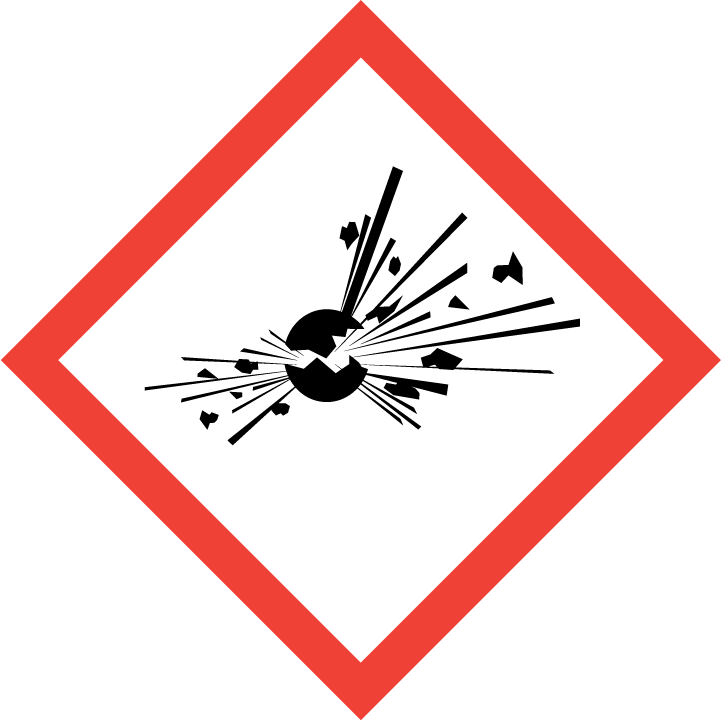
Substances with this label are at risk of reacting explosively. These also include some self-reactive substances and mixtures and organic peroxides. The pictogram visualises an exploding bomb.
Articles under this hazard class may have the following hazard codes and statements:
H209: Explosive
H204: Fire or projection hazard
H240: Heating may cause an explosion
H420: Heating may cause an explosion
H421: Heating may cause fire or an explosion
Chemicals in this class include flammable liquids, as well as flammable, pyrophoric (will ignite instantly upon exposure to oxygen), and chemically unstable gases.
Articles under this hazard class may have the following hazard codes and statements:
H220: Extremely flammable gas
H230: May react explosively even in the absence of air
H232: May ignite spontaneously if exposed to air
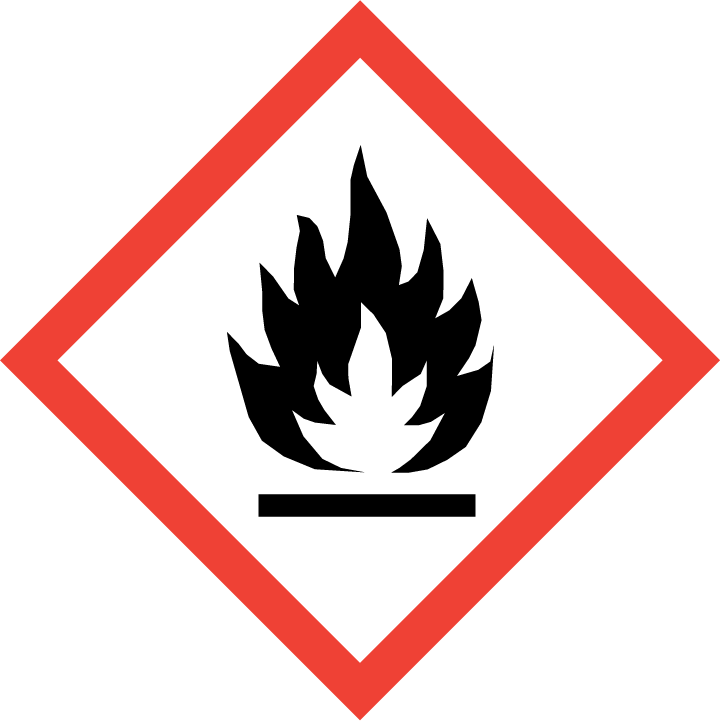
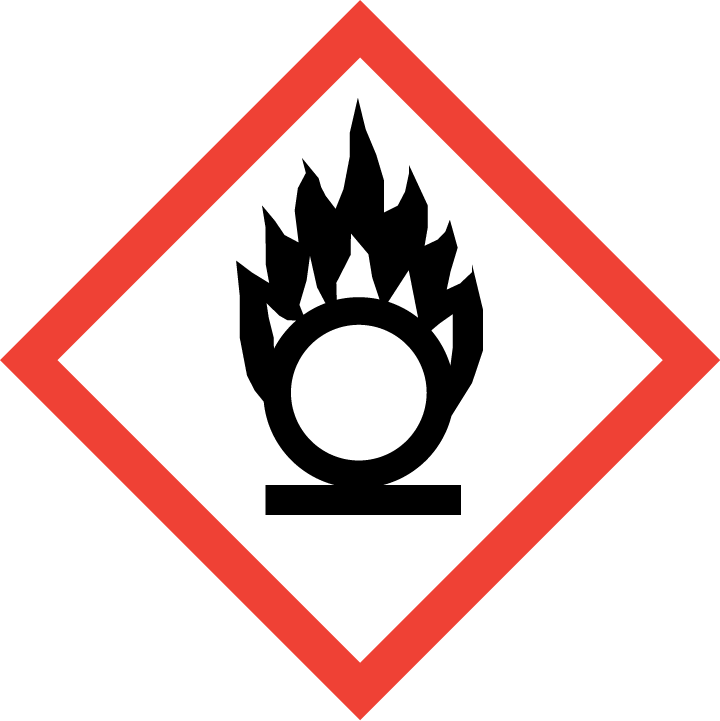
Substances with this label, indicated by a flame over a circle, are at risk of reacting explosively. These may be solids, liquids, or gases.
Articles under this hazard class may have the following hazard codes and statements:
H270: May cause or intensify fire; oxidiser
H271: May cause fire or explosion; strong oxidiser
H272: May intensify fire; oxidiser
Indicated by a gas cylinder, this category includes compressed gases and aerosols. If the article under pressure is also flammable, the pictogram for flammable items must also be included on the label.
Articles under this hazard class may have the following hazard codes and statements:
H280: Contains gas under pressure; may explode if heated
H281: Contains refrigerated gas; may cause cryogenic burns or injury
H282: Extremely flammable chemical under pressure: may explode if heated
H283: Flammable chemical under pressure: may explode if heated
H284: Chemical under pressure: may explode if heated

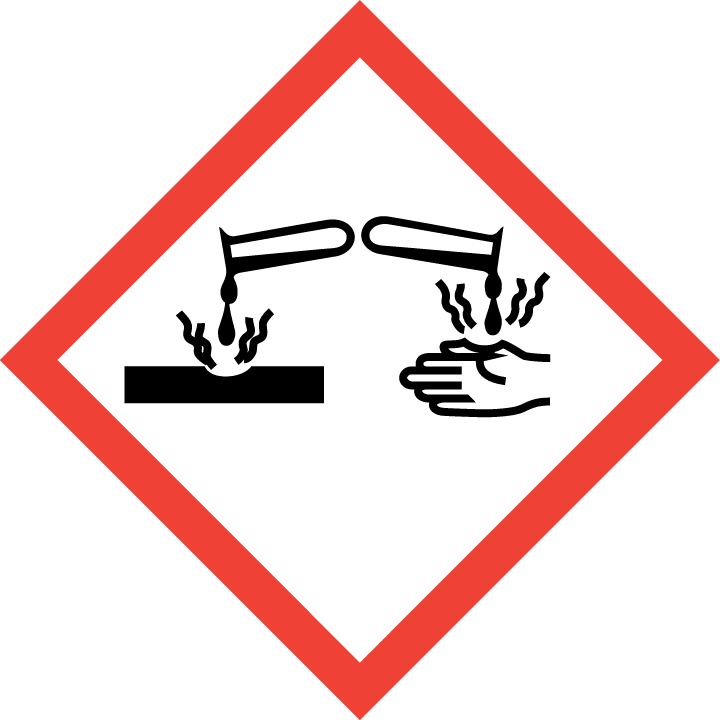
These items can cause the corrosion of metals, skin, eyes, and other materials. Materials of this nature are visualised with a hand and a metal surface being corroded from a substance.
Articles under this class may have the following hazard codes and statements:
H290: May be corrosive to metals
H314: Causes severe skin burns and eye damage
H318: Causes serious eye damage
Illustrated with a picture of a skull and crossbones, articles with this label pose an extreme oral, dermal, or inhalation hazard, able to cause illness or even death if exposed.
Articles under this class may have the following hazard codes and statements:
H300: Fatal if swallowed
H301: Toxic if swallowed
H310: Fatal in contact with skin
H311: Toxic in contact with skin
H330: Fatal if inhaled
H331: Toxic if inhaled

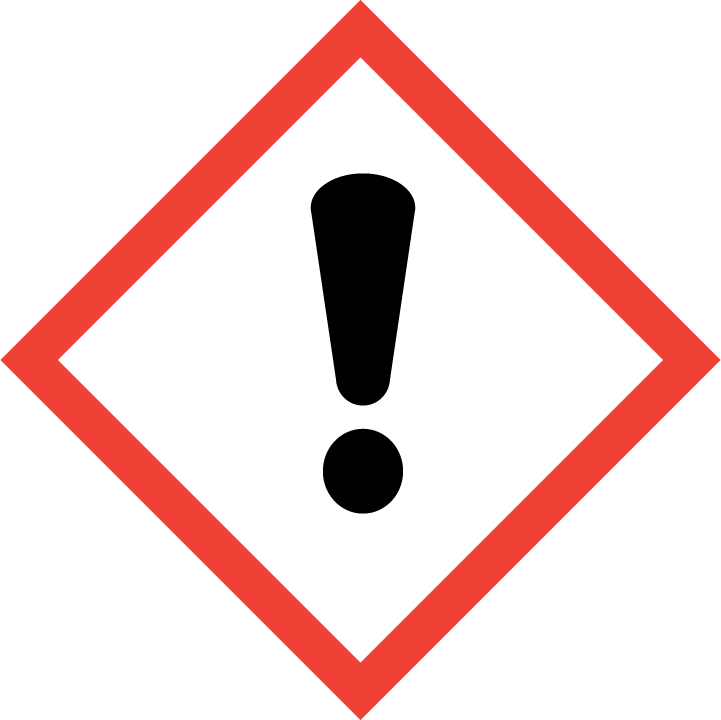
Articles in this category can cause irritation to the skin, eyes, and respiratory tract, or can be harmful if swallowed. This is indicated by an exclamation point on the label.
Articles under this class may have the following hazard codes and statements:
H302: Harmful if swallowed
H312: Harmful in contact with skin
H315: Causes skin irritation
H317: May cause an allergic skin reaction
H332: Harmful if inhaled
H336: May cause drowsiness or dizziness
H420: Harms public health and the environment by destroying ozone in the upper atmosphere
Indicated by a white star shape spreading through a person’s chest, items with this label may cause chronic health hazards in people if exposed. This may include the potential to cause allergies, organ damage, fertility problems or birth defects, cancer, or genetic mutations.
Articles under this class may have the following hazard codes and statements:
H304/5: May be fatal if swallowed and enters airways
H334: May cause allergy or asthma symptoms or breathing difficulties if inhaled
H340/1: May cause/suspected of causing genetic defects
H350/1: May cause/suspected of causing cancer
H360/1: May cause/suspected of damaging fertility or the unborn child
H370/1: Causes/may cause damage to organs
H372/3: Causes damage to organs through prolonged or repeated exposure
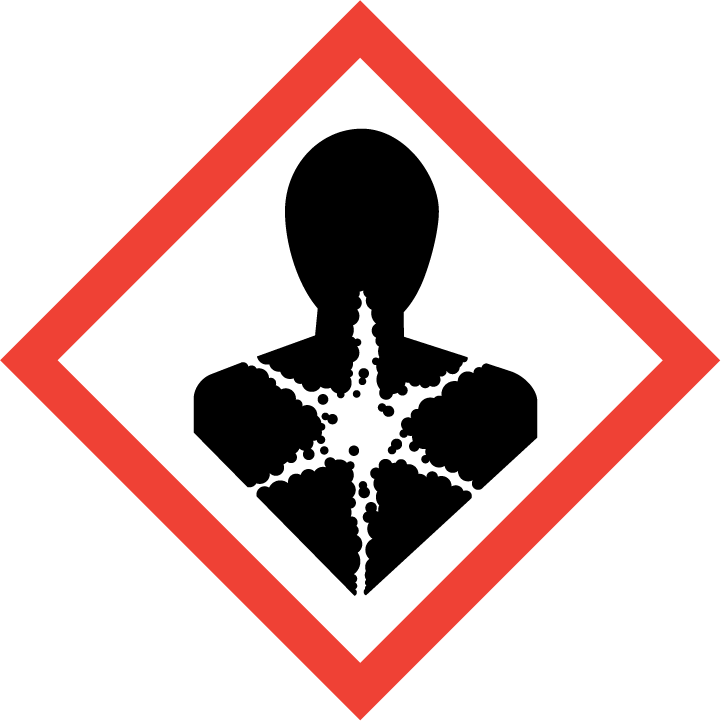
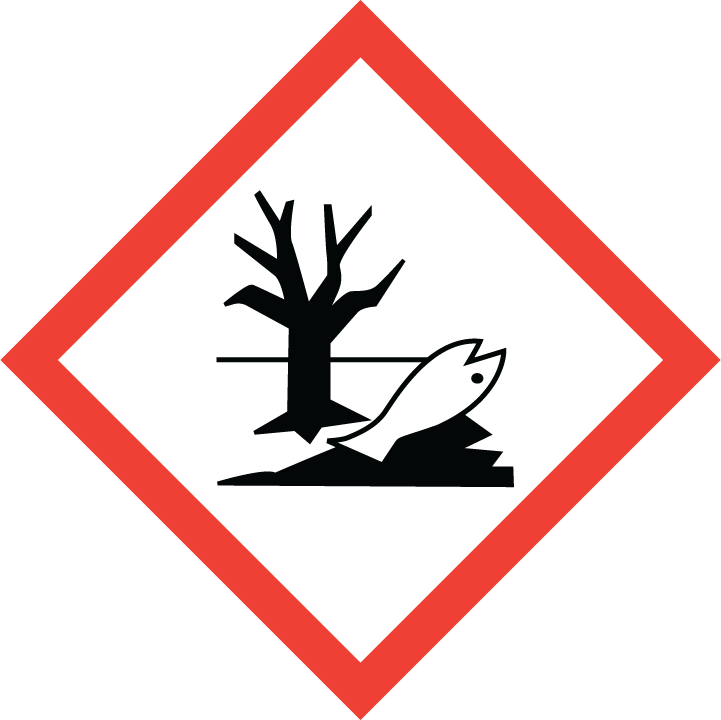
This label shows an upside-down fish and a leafless, dead tree. Chemicals in this class are hazardous to the natural environment if released
Articles under this class may have the following hazard codes and statements:
H400: Very toxic to aquatic life
H410: Very toxic to aquatic life with long lasting effects
H411: Toxic to aquatic life with long lasting effects
If you want to know more about chemical safety, storage, or regulations, we are here to help. At Chemwatch we have a range of experts spanning all chemical management fields, from heat mapping to Risk Assessment to chemical storage, eLearning and more. Contact us today to find out more at sales@chemwatch.net.
Sources: